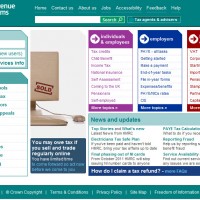
Sales director Roger Morris and national sales manager Jamie Pritchard explained to brokers how underwriters consider loans for the self-employed.
Morris and Pritchard gave attendees a whistle stop tour of the biggest differences in the way lenders classify applicants as self-employed, different attitudes towards the number of years’ accounts needed and which figures are used in income calculations.
As brokers will already know, the differences are vast and tricky to navigate. The Principality, for example, says that a 5% shareholding in a firm makes you self-employed, the Newbury is of the opinion that a 40% stake is required. Precise sits somewhere in-between using a 25% shareholding as its marker. But, rather than spending the time talking market criteria, the team gave tips on how brokers can join up the dots of self-employed documents and execute Morris’s mantra, ‘tell the underwriter before they have to ask’.
Cross checking
The vigilant broker will already cross check information supplied on supporting documents against the application form. Here’s a few tips, links and reminders from the Precise team to achieve the ‘right first time’ standard.
The accountant’s name, address and qualification which appear on the accountant’s certificate and/or a covering letter for accounts should be checked against the application form.
The qualification should always be checked to prove its validity. Each accountant body will have a website with a list of its members which is usually free to search so you can vet the accountant before sending off the application.
The search functions are not always easy to find and are sometimes listed at the bottom of the site under useful links. The ACCA is a good example of this and takes several clicks to get through to the member directory but it is something the underwriter will do so it’s worth taking the time.
To verify length of time the applicant has been trading, check Companies House if the applicant owns a limited company or LinkedIn if the applicant is a sole trader.
Check that the directors’ names on the front of the accounts are the ones stated on the application form.
Sense check all documents provided. Typos on headers and footers of official documents, numbers which don’t correctly follow on SA302s or accounts and telephone numbers which are one digit too short are all signals that documents may not be legitimate.
Income checks
Morris let attendees into a secret – underwriters cannot read accounts. They know which figures they can use to calculate income and will thoroughly cross check directors’ names and company addresses but they don’t, line-by-line, understand profit and loss accounts.
His advice is that if there is an anomaly in the accounts which could affect the mortgage decision but there is a reasonable explanation, get a letter from the accountant to explain it and submit it with the application.
Use free resources
Companies House should be bookmarked as favourite website for brokers dealing with self-employed applicants, it’s an invaluable source of information.
The register will show the date the company was incorporated which can be checked against the start date on the application. There may be inconsistencies which can be explained but the question needs to be asked and documented at the back of the application form.
If the borrower has said they cannot supply three years’ accounts but the firm has been trading for longer than three years, this throws doubt on the integrity of the application.
The listing will tell you the company type, when the last accounts were filed and if the company is still actively trading.
Morris said two of the underwriters’ favourite tools for checking the validity of address details are Google Earth and Street View. Pop the applicant’s company name and address into one of Google’s visual searches to see if they are where and what they are supposed to be. If there is a row of garages showing in place of your applicant’s hairdressing salon, something’s not right. Similarly you can ‘Street View’ the accountant’s address if they have business premises.
Yell.com, used more before the invention of Google’s 3D maps, is a quick way of checking out the applicant’s business. Most are listed, even small traders. Gum Tree is another.
Social Media
Everyone’s heard of employers checking out future recruits’ Facebook pages to sniff out unruly behaviour but apparently this habit has been adopted by mortgage underwriters now too. Instagram has been used to check out whether an applicant has UK residency. An applicant’s feed which only ever showed them to be out and about in Dubai over a lengthy period proved key in establishing that the applicant had falsely declared to be a UK resident.
LinkedIn allows you to see the applicant’s job history and nature of their employment – but remember if you want to go incognito sign out of your own LinkedIn account first or you’ll be rumbled.
















